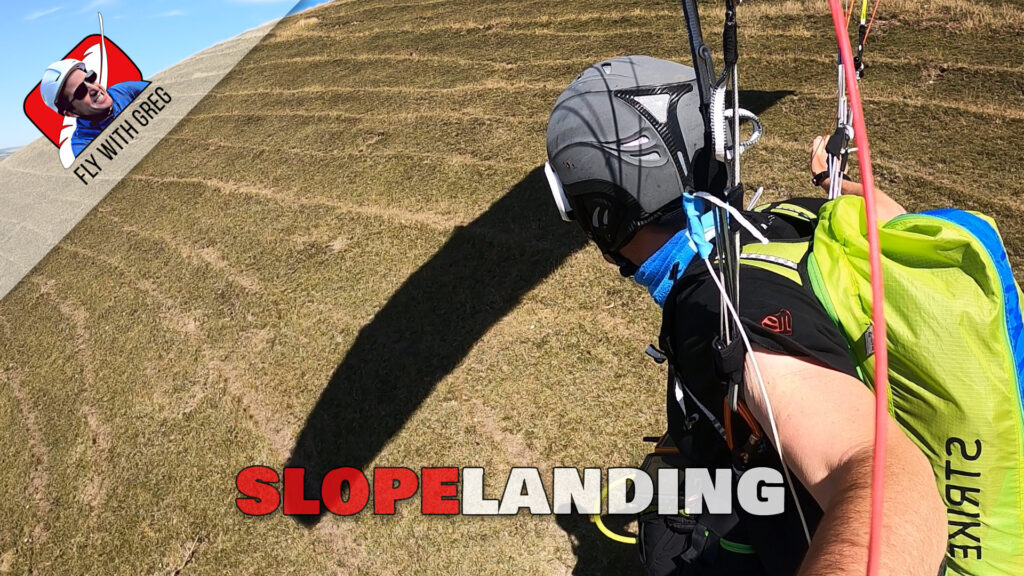A slope landing is when you land across any steeply sloping terrain, usually on the face of a soaring site. It’s a good technique in an emergency, or if there are no safe landing alternatives. Also to stop dropping out on a good day! But it can be risky, and leave you in a place that is hard to rescue you from.
How do you do it right?
- Try to find a part of the hill that has a wind across it (at an angle), not perpendicular to it.
- Approach from the slow side (flying into a slight headwind) where your ground speed is lowest.
- Choose an open area clear of obstacles, with a consistent slope angle.
- Set up on approach along a straight line leading at 30 degrees upslope across the contours.
- Get your legs down
- Keep hands up as you approach the hill
- Flare evenly, deeply, and run uphill
- Control the wing towards the hill side.
To finesse this, approach on quarter brakes, release them to initiate a final swoop, flare as before. The more you swoop, the steeper you can make your slope landing. Practice this first on a flat landing field.
What are the dangers? Slopes often have uneven terrain and obstacles! Downwind landing on a slope risks a broken ankle. Approaching too slowly or trying to turn in the last moment risks a spin. If your speed is high both ways, it’s not safe to slope land until you are experienced at slope landing. Be careful of making this decision too late, or missing your slope and going lower and lower into a dead air behind trees. Rather fly out to land at the bottom.
Due to the steepness of the terrain, and the likelihood of traffic when needing slope landing (everyone often drops out together) it is not recommended for low airtime pilots to try slope landing on busy sites. Get some solid local experience first with top to bottoms, then top landings, before progressing to your first slope landings on open slopes.
Common mistakes
- Pilots try to turn into wind at the last second, to make a ‘softer landing’. But unless you are an expert, this often results in a roll (heavier impact or missing your spot and getting lots of unwanted height because you are no longer crossing the contour lines of the slope.
- Pilots put their hill-side hand out ‘in defence’ as the hillside approaches. This turns the wing into the slope.
- Pilots try to follow the contour line to land on a level track. This works if the lift has stopped, but if there is an upslope breeze, the lift will prevent you from landing on a level course, making your ‘final approach’ very long. Going upslope makes your landing much more accurate and certain.
Practice your slope landing approaches on any sloping area of your landing field, or on sand dunes and low hills, so that when you need it, you know how to do it!

Watch the complete demonstration in the flight academy video on SLOPE LANDING.
This forms part of FLIGHT LEVEL 6 which takes you through every aspect of landing skills so you are fully prepared for cross country flying. Master landing setups, control your glide and get gentle touchdowns, in one week! Get support for your flying, ask questions in the chatroom, and fly with confidence.
Begin the free trial course and get started on your journey to paragliding freedom…

